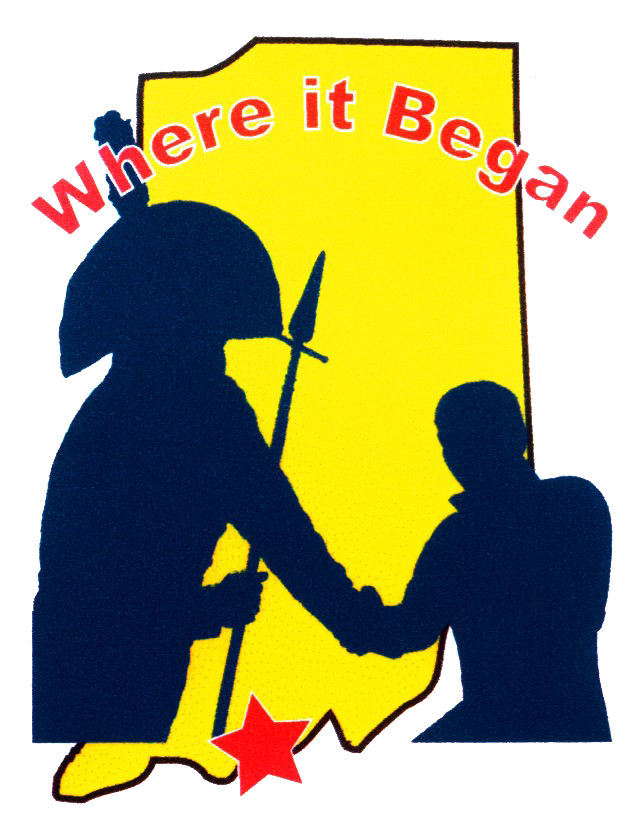Falls of the Ohio Sites
The Falls of the Ohio Interpretive Center at the Falls of the Ohio State Park in Clarksville, Indiana includes exhibits that tell the story of the Lewis and Clark Expedition. This is a good place to start your discovery of Indiana’s role in the Expedition.
While at the Park, you can visit the site where American Revolutionary War hero George Rogers Clark lived in a cabin from 1803 to 1809. It was here at the George Rogers Clark Home Site that George’s brother, William Clark, joined with Meriwether Lewis to recruit the first members of the Corp of Discovery and launch the expedition on October 26, 1803.
You can walk from the Interpretive Center to the George Rogers Clark Home Site on The Ohio River Greenway. It is a recreational corridor that runs along a 7.5 mile stretch of the Ohio River through the communities of Jeffersonville, Clarksville and New Albany, Indiana. From the Interpretive Center, the path meanders along the state park and federal wildlife conservation area where visitors encounter the replica cabin at the Home Site, which is the starting and ending point of the Lewis & Clark Expedition. Nearby Lewis & Clark Bicentennial Park commemorates the Expedition with interpretive signage where the Expedition began.
You can continue your exploration of Lewis and Clark at the Falls of the Ohio with a quick trip across the Ohio River into Louisville, Kentucky.
Locust Grove is the site of a Georgian mansion built circa 1792 by William and Lucy Clark Croghan. Here William and Lucy, along with Lucy’s brother, General George Rogers Clark, hosted visits from presidents, political leaders, and other luminaries of their time. George and Lucy welcomed their younger brother William Clark and Meriwether Lewis to Locust Grove [https://locustgrove.org/learn/lewis-and-clark/] in 1806 as they returned from their historic Lewis and Clark Expedition.
The Filson Historical Society is dedicated to preserving the history of Kentucky and the Ohio Valley Region. It has extensive collections of original manuscripts, letters, diaries, photographs, architectural records, rare imprints, books, maps, newspapers, textiles, portraits, and other three dimensional items, including a sheep horn collected by William Clark during the Lewis and Clark Expedition. The Society hosts weekly lectures, historical tours, exhibits, reading and discussion groups, weekend-long conferences, a field institute, and excursions.
